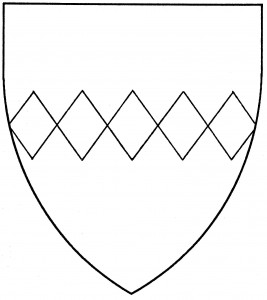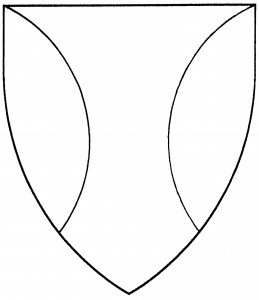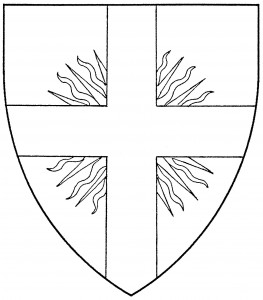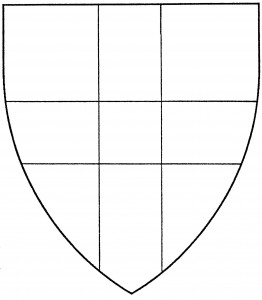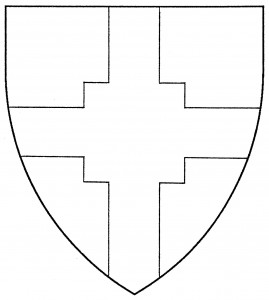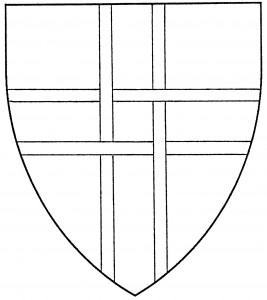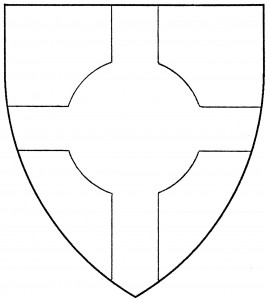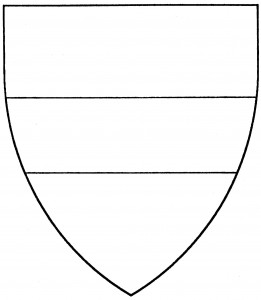
Fess (Period)
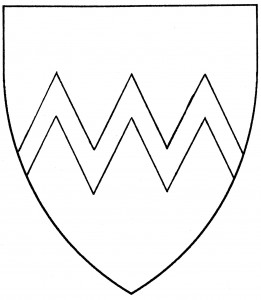
Dance (Period)
The fess is an heraldic ordinary, a horizontal stripe across the center of the shield. Its diminutive is the “bar”, or in extreme cases the “barrulet”; Society blazonry does not recognize any other terms for the fess’s diminutives.
The “dance” is another name for the fess dancetty; some texts hold that it was an independent charge in medieval times. The term is authorized for use in Society blazonry, in the hope it will reinforce the medieval definition of “dancetty”.
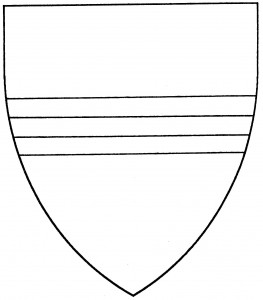
Bar gemel (Period)

Humet (Period)
The “bar gemel” (literally “twinned bar”) is visually equivalent to a fess voided; medieval heralds also blazoned it simply a “gemel” or “gemelle”. Unlike the fess voided, it is considered an independent charge, and no other charges come between its two halves. (The spacing for “two bars gemel” will be uneven, unlike the spacing for “four bars”.)
In like manner, the “humet” is a medieval name for a fess humetty; the term is not much used today, since other ordinaries may also be humetty.
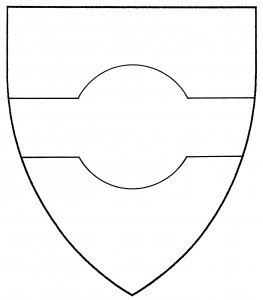
Fess nowy (Period)
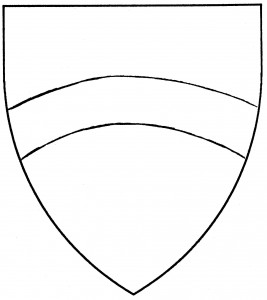
Fess enarched (Accepted)
The “fess nowy” (literally “knotted”) doesn’t refer to a peculiar knotting or fretting, but is used in the sense of a knot of wood: a circular node or lump at the fess’s center. Examples have been found in 15th C. heraldic texts; the treatment is permitted for Society use.
The “fess embattled” is embattled only on its upper edge, unless specifically blazoned “(embattled) counter-embattled” or “bretessed”. The “fess enarched” curves to chief unless otherwise specified; it was originally meant to depict the convexity of the shield, and consequently carries no heraldic difference from the plain fess. The “fess doubly-arched” is not permitted. See also wall.
The King of Atlantia bears: Per pale argent and azure, on a fess wavy cotised counterchanged a crown vallary Or, overall a laurel wreath vert.
Brunechilde de Ravenel bears: Azure, a fess Or cotised argent.
Robert Conyers bears: Per pale argent and azure, a fess counterchanged.
Gwen Hir bears: Azure, a fess fusilly argent.
Marcus Tullius Calvus Cambrensis bears: Or, a dance sable.
Cadan Sacart bears: Vert, two bars engrailed Or.
Duban O’Guinn Silverwolf bears: Vert, three bars gemelles argent within a bordure ermine.
Ruaidhrí Mac Diarmada bears: Argent, a fess nowy azure charged with a plate.

